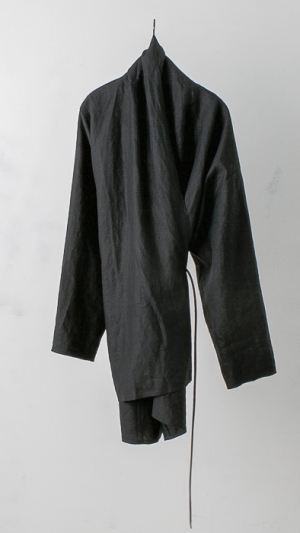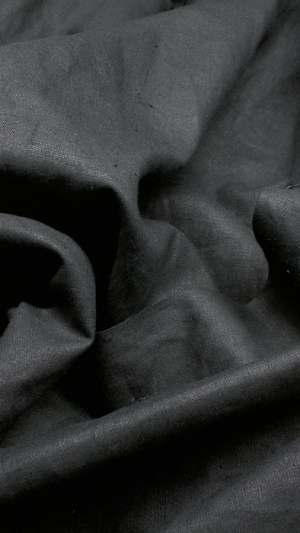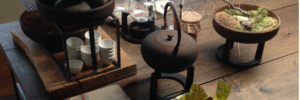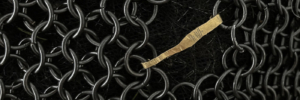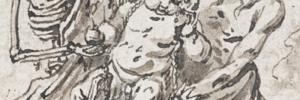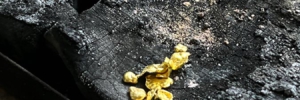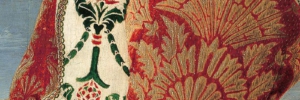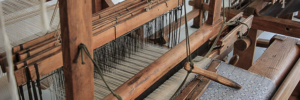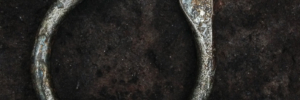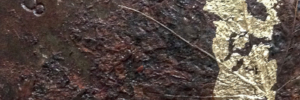/Versatility in every fiber
Thinking of hemp, one probably first talks in acronyms and behind closed doors: THC (tetrahydrocannabinol). This cannabinoid was and is still partly used as a synonym for hemp. Yet it is only one of over 100 active ingredients found in a cannabis plant (as the botanical name for hemp). And: Not every hemp plant can be rolled and smoked, because not every hemp species releases (enough) psychoactive substances.
Hemp plants without THC or with low THC content can therefore not be smoked, but their fibers, stalks and leaves can be used for many other things. Incidentally, mankind has been doing this since they settled down over 10,000 years ago. Since then, fiber and utility hemp has gone through many stages of development: it has served as cord for jugs, as sailcloth and rope it has crossed oceans and connected the old world with the new. Hemp was already used in ancient times to make clothing and was later processed into paper.
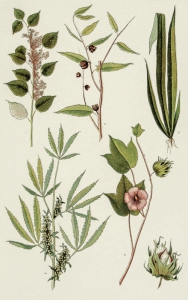
Illustration drawings of five fibre plants, 1902, The New International Encyclopædia,
v. 9, 1905, facing p. 752, Julius Bien and Co., Lithographers
unknown artist; Julius Bien and Co., lithographers, Public domain, via Wikimedia Commons
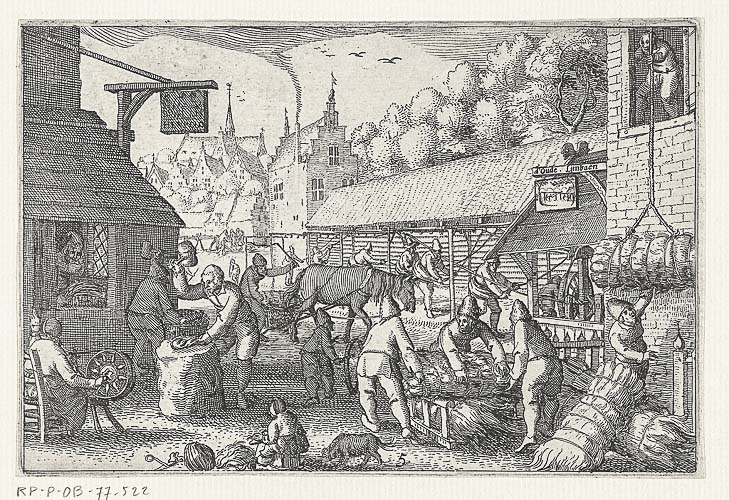
„Hemp and rope manufacturing c1600 in North Holland “
Rijksmuseum, CC0, via Wikimedia Commons
Hemp in writings and for soldiers
If some sources are to be believed, the first draft of the American Declaration of Independence was written on Dutch hemp paper, and God’s Word in the form of Gutenberg’s first Bible from 1455 is also said to have been printed on hemp paper. Unfortunately, hemp is also associated with a Bible of a different kind, the “funny hemp bible” from 1942, published by the Reichsnährstand with the intention of motivating German farmers in rhyme form to once again devote more time to hemp cultivation, as this was essential for the war effort. In the same year, the film “Hemp for victory,” produced by the U.S. Department of Agriculture, hit theaters across America. The protagonist: commercial hemp. The message: farmers should grow more hemp again. After all, the U.S. Army needed hemp to make ropes or uniforms.
The displacement of hemp
While hemp was hard to come by until the 20th century, various developments ensured that the hemp boom eventually subsided. More steamships eventually meant less rope. The emergence and inexpensive industrial processing of cotton and synthetic fibers, and also the industrialization of paper production from wood – all this contributed in part to the fact that hemp eventually ran out of steam. In addition, just the smoke was also one of its nails in the coffin, since hemp was always equated with cannabis and hemp cultivation was either completely banned or heavily regulated in many countries and partly still is.
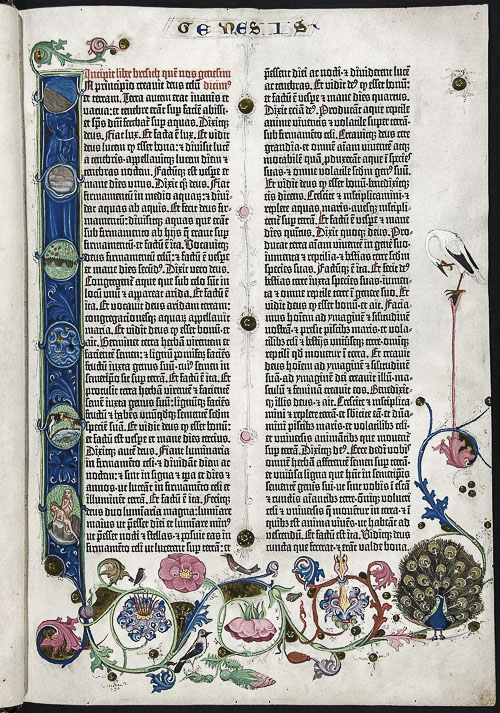
Beginning of the book of Genesis in the Gutenberg Bible, 1454, Copy der Staatsbibliothek Berlin
artwork:Gutenberg; picture: Staatsbibliothek Berlin, Public domain, via Wikimedia Commons
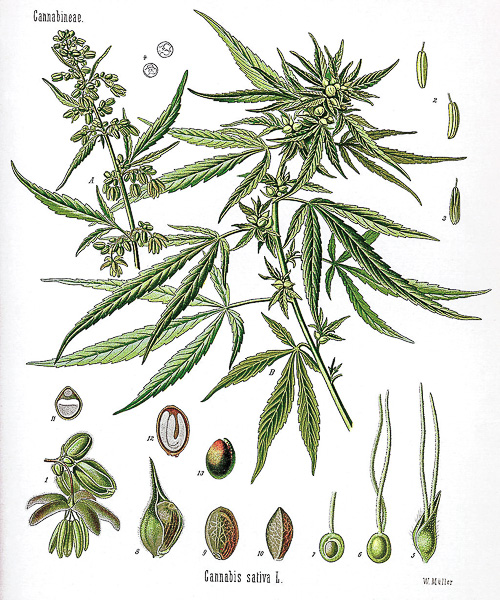
Franz Eugen Köhler’s “Medizinal-Pflantzen”, 1887
Walther Otto Müller, Public domain, via Wikimedia Commons
Fiber plant as superfood
Especially hemp seeds, hemp leaves and hemp flowers have experienced a renaissance as food in recent years and are found more or less unasked in a super/streetfood row with shiitake mushrooms, ginger or green cabbage. Sure, in hemp, nutrients and vital substances line up close together: antioxidants, important vitamins, etc. And hemp leaves are also delicious, for example as a flavored additive in food and drinks. Otherwise, hemp can be found in the form of hemp protein or hemp oil on the shelves of organic markets and drugstores, by the way, also as an ingredient in many cosmetic products.
Hemp for paper
The stalks of hemp are the raw material for many specialty papers, such as cigarette paper or banknotes. Whether hemp will pay off as a substitute for wood in paper production does not really mean anything yet. Yet paper made from hemp is more tear-resistant, can be recycled more often, has a higher cellulose content than most tree species and is free of lignin. This molecule, which is typical of trees, has to be removed at great expense when wood is processed into paper.
Hemp in the apparel industry
Though it probably belongs in the realm of urban legend that Levi Strauss is said to have made his first pair of jeans out of hemp in the 1870s, Levi’s released a new collection in May 2019 that was made from “cottonized hemp,” hemp treated to ultimately feel like cotton. The water savings compared to growing cotton is certainly a greenlabeling argument there, but maltreating hemp until it’s some kind of more eco-friendly cotton is hardly in the spirit of the tradition-steeped crop.
Moreover, hemp clothing doesn’t actually need to be “spruced up” or “pimped.” Clothing made from this natural fiber, which is somewhat coarser than cotton, does not always have to be tough. Because thanks to modern textile processes, there are now also hemp fabrics that are much softer and cuddlier than the coarse and scratchy hemp sweaters that you may still remember. Nevertheless, hemp is and will remain sturdy even in textile form, which simply means that it can be worn for longer periods of time.
Hemp is usually woven in twill or plain weave and is much shinier and denser than cotton. The fibers absorb moisture without releasing it 1:1. So you feel virtually dry even when the clothes are damp.
As a natural fiber, hemp has a kind of built-in temperature regulation, which naturally regulates excessive sweating in summer and freezing in winter.
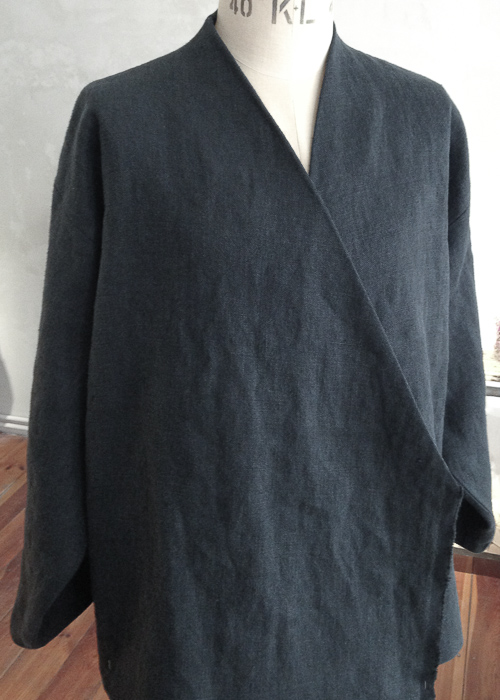
Hemp fabric, plain weave
A question of price:
Money and the environment
Like many “organic, sustainable items” hemp has a reputation for being an expensive product. One reason for this is that hemp textiles are not mass-produced like cotton, for example.
Nevertheless buying hemp clothing makes sense not only economically but also ecologically save yourself and the environment from Pesticides, insecticides, pollutants and high water consumption.


